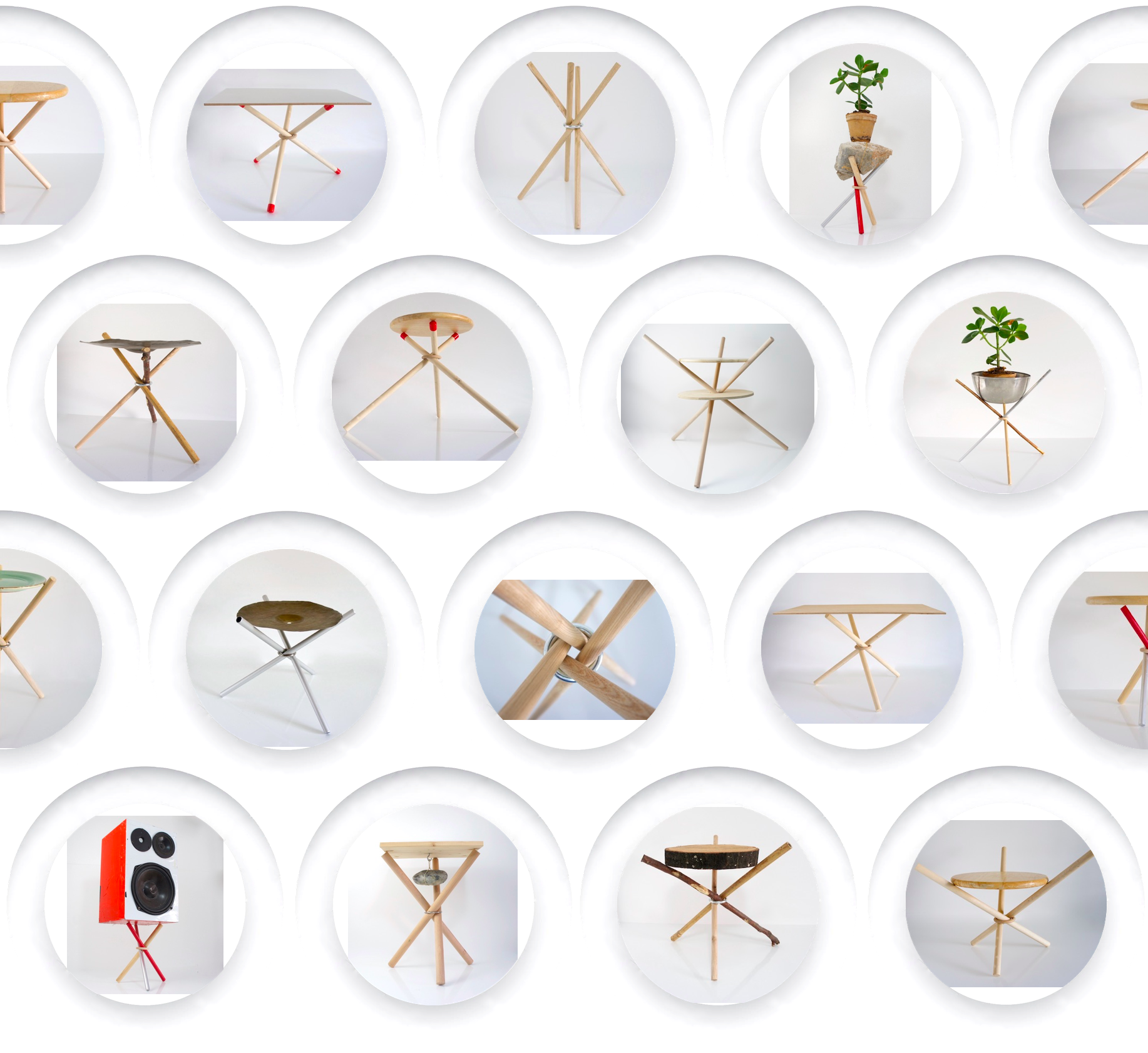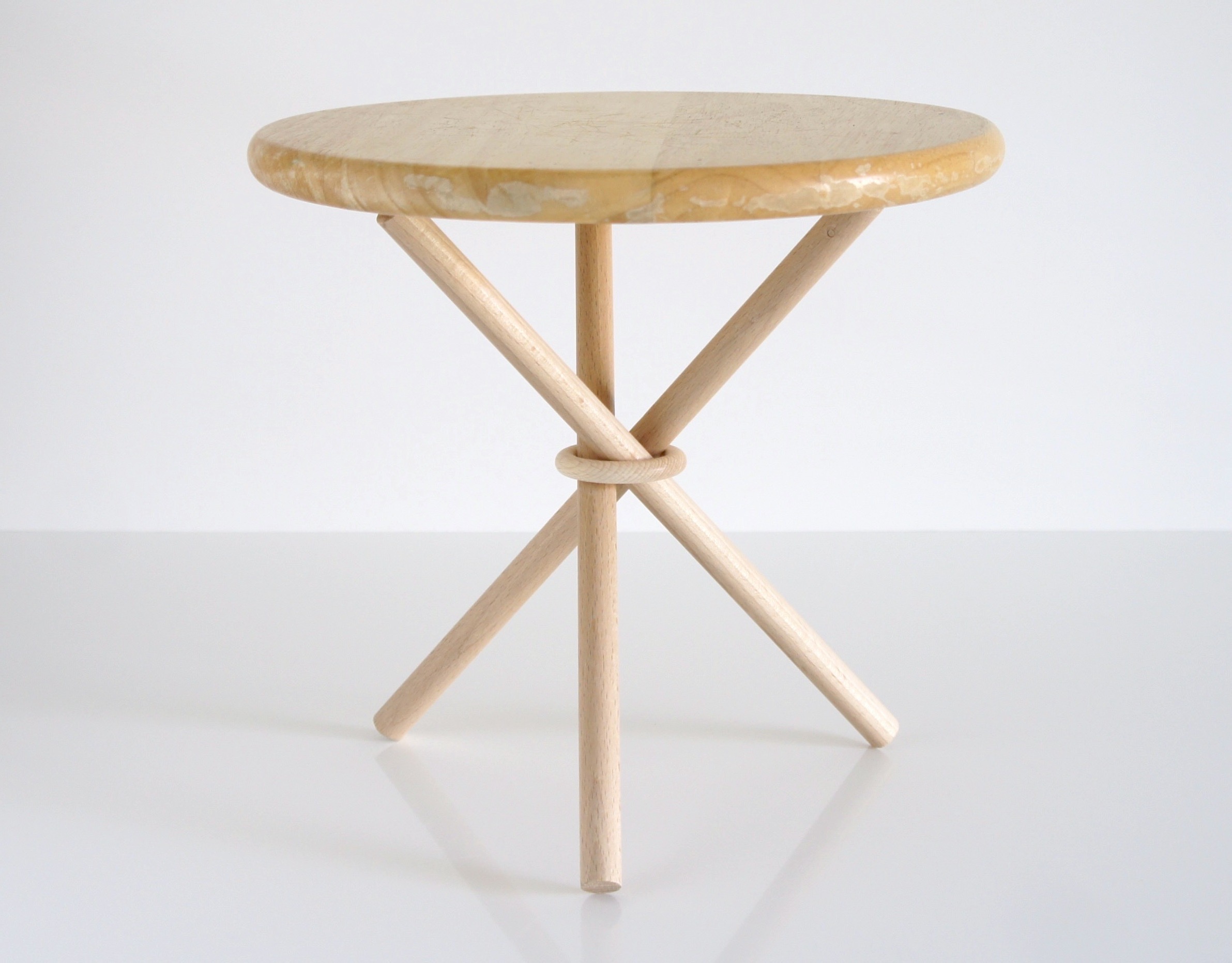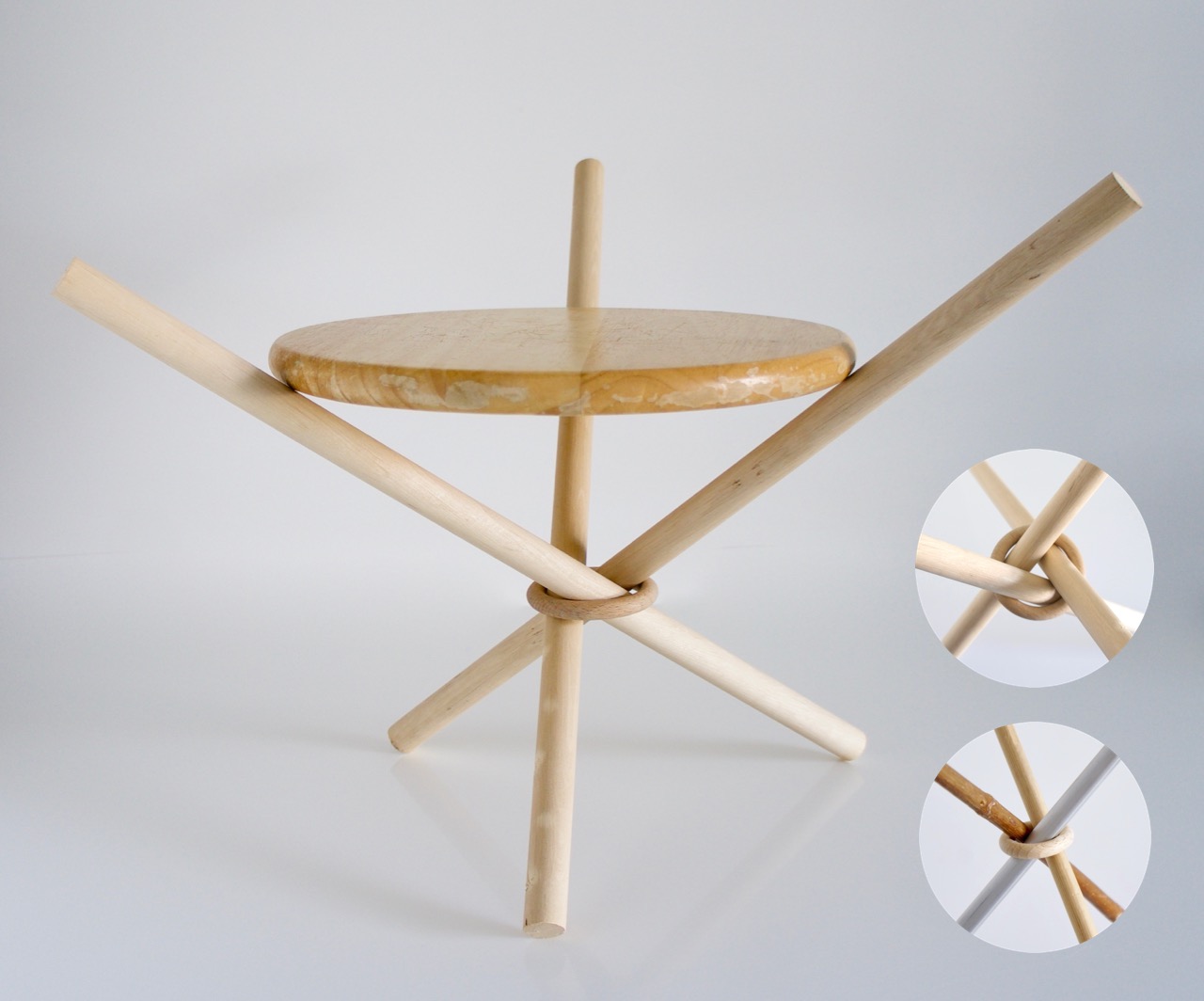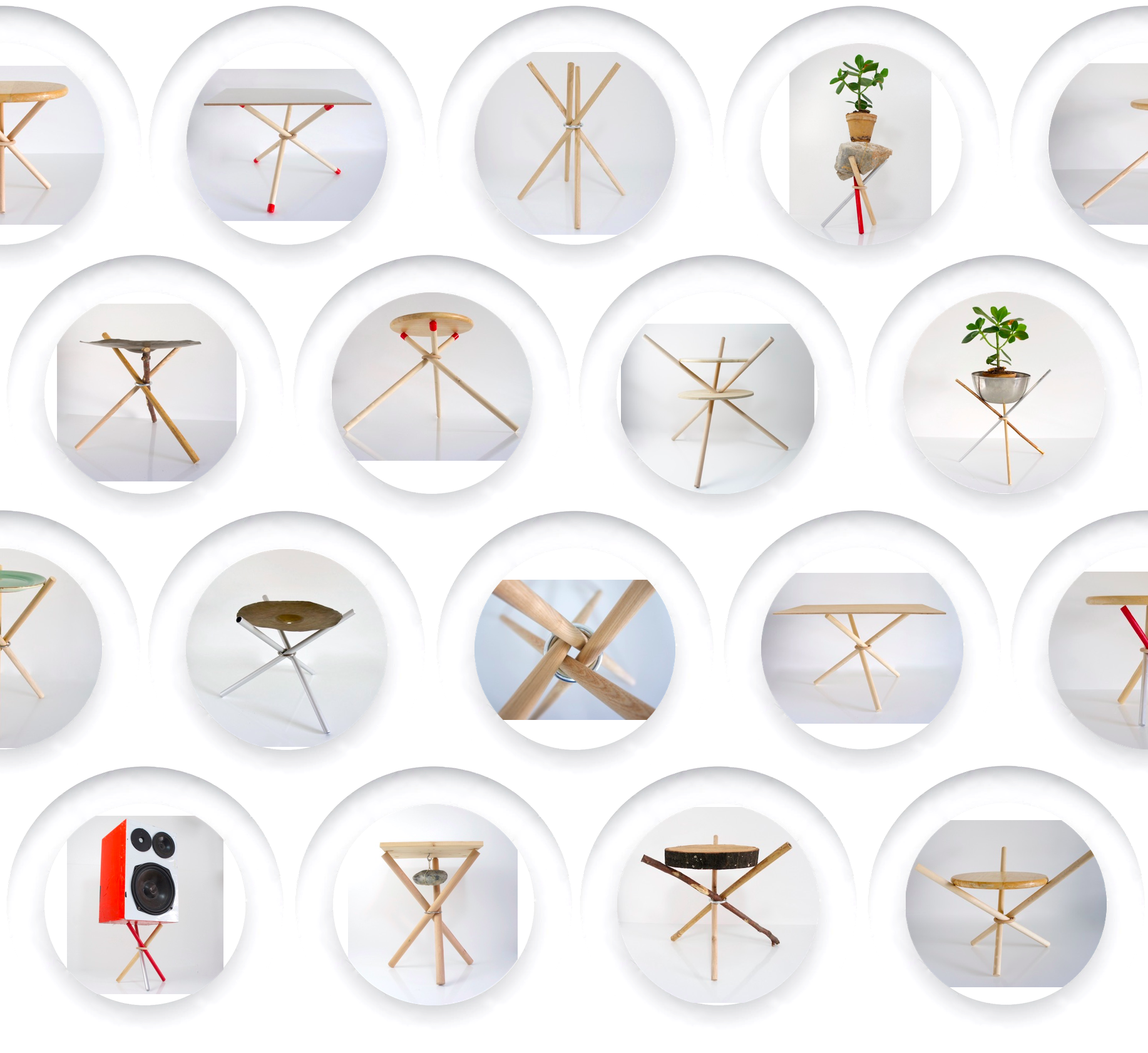Ringbein

Useful information
- Team members
- Lars Zimmermann Michaela Muchina
- Country
- Germany
- Keywords
- open circular furniture boards tables
Short Description
Ringbein is a simple design (trick) to make tables, boards and more from local parts & materials.
Detailed Description
Ringbein is an open circular design. It is a collection of solutions with one core trick in the middle that allows you to make tables, boards and more using your (local) parts and (left over) materials.
The design is simple, adaptable, flexible and modular and can be executed in different forms. It is “upcycling friendly” and allows you to give kinds of materials a second life. This makes sourcing locally extremely easy.
It is made for distributed manufacturing. Production is so simple that it can be carried out by basically everyone everywhere with the absolute basic tools.
Because it is open (source), circular and made for distributed manufacturing there is no final version of the design.
Project Details
- Does your design take social and cultural challenges and human wellbeing into consideration?
It aims to make a contribution to a change in our design culture. Climate change, biodiversity collapse and resource depletion are problems caused by production – consumption and design. Open circular design tries to achieve more with less. It is also an attempt to pull the grimmest teeth of capitalism.
- Does your design support sustainable production, embodying circular or regenerative design practices?
I think there is already enough information about that in the main text.
But it is an open circular design. It checks 8 of the 9 boxes we connect to open circular design. It is simple, modular, open licensed, educative, upcycling friendly, based on standards, pre-use and supports recycling.
How we see Open Circular Design? Here is our article on that: https://mifactori.de/what-is-open-design/
- Does your design use principles of distribution and open source?
Yes. It is openly licensed, well documented and the design itself tries to support distributed manufacturing in the best way possible (we can think of).
- Does your design promote awareness of responsible design and consumption?
I think the answer is yes. For a couple of reasons.
Our studio also works on campaigns and activism. And our designs are part of this. Example for design activism: https://mifactori.de/self/
We explain our design methods of open circularity and our own designs are (almost aggressively) different. Describing and demanding change.
Our designs are educative. They aim to spread circular literacy and skills to work creatively and sustainably with the things around you.
Images



Project Website

Useful information
- Team members
- Lars Zimmermann Michaela Muchina
- Country
- Germany
- Keywords
- open circular furniture boards tables
Short Description
Ringbein is a simple design (trick) to make tables, boards and more from local parts & materials.
Detailed Description
Ringbein is an open circular design. It is a collection of solutions with one core trick in the middle that allows you to make tables, boards and more using your (local) parts and (left over) materials.
The design is simple, adaptable, flexible and modular and can be executed in different forms. It is “upcycling friendly” and allows you to give kinds of materials a second life. This makes sourcing locally extremely easy.
It is made for distributed manufacturing. Production is so simple that it can be carried out by basically everyone everywhere with the absolute basic tools.
Because it is open (source), circular and made for distribtued manufacturing there is no final version of the design.
Project Details
- Does your design take social and cultural challenges and human wellbeing into consideration?
It aims to make a contribution to a change in our design culture. Climate change, biodiversity collapse and resource depletion are problems caused by production – consumption and design. Open circular design tries to achieve more with less. It is also an attempt to pull the grimmest teeth of capitalism.
- Does your design support sustainable production, embodying circular or regenerative design practices?
I think there is already enough information about that in the main text.
But it is an open circular design. It checks 8 of the 9 boxes we connect to open circular design. It is simple, modular, open licensed, educative, upcycling friendly, based on standards, pre-use and supports recycling.
How we see Open Circular Design? Here is our article on that: https://mifactori.de/what-is-open-design/
- Does your design use principles of distribution and open source?
Yes. It is openly licensed, well documented and the design itself tries to support distributed manufacturing in the best way possible (we can think of).
- Does your design promote awareness of responsible design and consumption?
I think the answer is yes. For a couple of reasons.
Our studio also works on campaigns and activism. And our designs are part of this. Example for design activism: https://mifactori.de/self/
We explain our design methods of open circularity and our own designs are (almost aggressively) different. Describing and demanding change.
Our designs are educative. They aim to spread circular literacy and skills to work creatively and sustainably with the things around you.
Images


